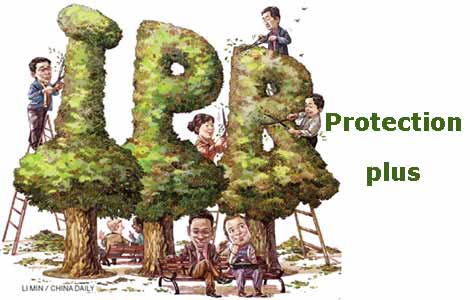Apple brand goes stale in China
Updated: 2013-09-17 07:24
By Mike Bastin (China Daily)
|
||||||||
Apple's recent launch of its "new" iPhone 5S and iPhone 5C models in China has already been a spectacular failure, which was something of a surprise to many. Apple's decision to include China in its initial launch, the first time it has chosen to do so, also surprised many.
However, the reasons behind Apple's unprecedented problems in China lie far deeper than the much-publicized pricing and product feature factors.
Apple's iPhone 5C was probably priced too high and the iPhone 5S does not offer Chinese potential buyers anything significantly new.
But reaching the real root causes of Apple's decline in China requires an insight into the reasons behind Apple's success in the first place.
Technology, more specifically cutting-edge high technology, of course played a large part in Apple's dramatic ascendance in China and displacement of the once dominant Nokia brand.
But Apple's "fun" and "fashion", even "cool" image really stole the show, to which Nokia had no answer. Steve Jobs and the Apple name contributed significantly to this "emotional" brand image and, at the time, a robust and sustainable competitive advantage.
Sadly the irreplaceable Steve is no longer with us and the Apple brand, inevitably, has become a commodity. Apples never remain fresh for long.
Furthermore, it is not the Apple name that is now active in the minds of Chinese people but the word "iPhone". It is, therefore, the case that Apple's high-tech offering is no longer a brand, and a powerfully emotional one at that, but a product.
The product name "iPhone" provides an immediate explanation of the product's basic functionality but even in the world of consumer electronics, just how many success stories are built on this alone? Precious few.
Quite simply Apple, has neglected the basic premise behind successful brand management: emotional association and differentiation.
Such neglect also explains Apple's lowly seventh place in the Chinese market where strong domestic competitors have so easily gained share.
However, all is not lost where Apple is concerned; its position in China far from lost. The iPhone is still firmly associated with Apple and, therefore, some record of Apple's previous, emotional image remains within Chinese memory.
Re-activating this link and refreshing and updating this record is now imperative
Updating the Apple brand, or, more accurately, the iPhone product, is unlikely to involve any incredible technological breakthrough. And, even if this does suddenly emerge, sustainable competitive advantage will not result.
It is the emotional attachment and positioning that requires repair and resurrection. But with Jobs gone and Apple far from fresh, how could this transformation take place?
The answer lies first and foremost in an additional emotional, associative brand name for each of the new product launches.
Double branding or two-tier branding strategies open up the possibility of the perfect combination of rational (often the parent, corporate brand name) and emotional (often the "new" product) brand names, such as Lenovo-Thinkpad.
So far removed is the Apple name from the iPhone product that any new combination of names should start with iPhone as the parent name, followed by a suitably emotional second name. "5S" and "5C" should, therefore, be replaced by a separate name for each of these slightly different products.
Finally, and crucially, these second, emotional brand names should now be Chinese and bear no resemblance to the English language. Chinese people now trust Chinese brands more and value both Western and Chinese brand associations.
The word iPhone will provide this Western association, which will conjure up a sound, reputable, reliable image, while the second Chinese name will deliver the much-needed emotional attachment.
Chinese people still buy brands and not products, but they will increasingly value a Chinese brand association in combination with a Western brand heritage.
Apple has pioneered smartphone branding before, but it must switch to two-tier branding and Chinese associations to do so again and regain its market success in China.
The author is a visiting professor at the University of International Business and Economics in Beijing and a researcher at Nottingham University's School of Contemporary Chinese Studies.
|
Apple's iPhone 5C was probably priced too high and the iPhone 5S does not offer Chinese potential buyers anything significantly new, according to experts. Provided to China Daily |
(China Daily USA 09/17/2013 page14)

 'Amazing Shanghai' on display in Big Apple
'Amazing Shanghai' on display in Big Apple
 Thirteen dead in US Navy Yard shooting
Thirteen dead in US Navy Yard shooting
 Exporters to face more trade friction
Exporters to face more trade friction
 Toddler-death defendant says he meant no harm
Toddler-death defendant says he meant no harm
 Watchdog bites with no favor
Watchdog bites with no favor
 Miss New York crowned 2014 Miss America
Miss New York crowned 2014 Miss America
 Summers withdraws from Fed chair contest
Summers withdraws from Fed chair contest
 Scientists make land arable again
Scientists make land arable again
Most Viewed
Editor's Picks

|

|

|

|

|

|
Today's Top News
Trending news across China, Sept 17
BRICS pledge cooperation on climate change
CBRC set to regulate 'chaotic' WMPs
Exporters to face more trade friction
Thirteen dead in US Navy Yard shooting
China, US team up on Central Asia
UN confirms nerve gas used in Syria
Minimum growth rate set at 7 percent
US Weekly

|

|







